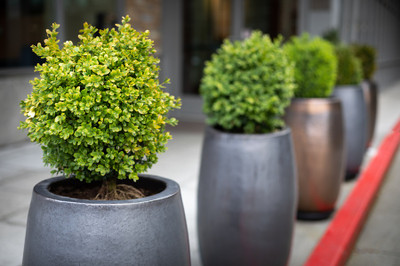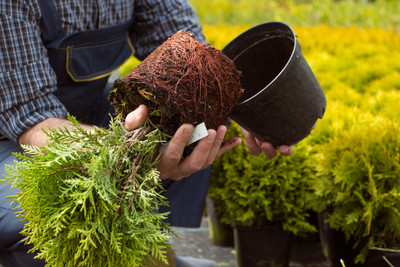How to Use Fiberglass Planters for Traffic Calming and Pedestrian Zones
Posted by Jason Wyrwicz on Aug 4th 2025
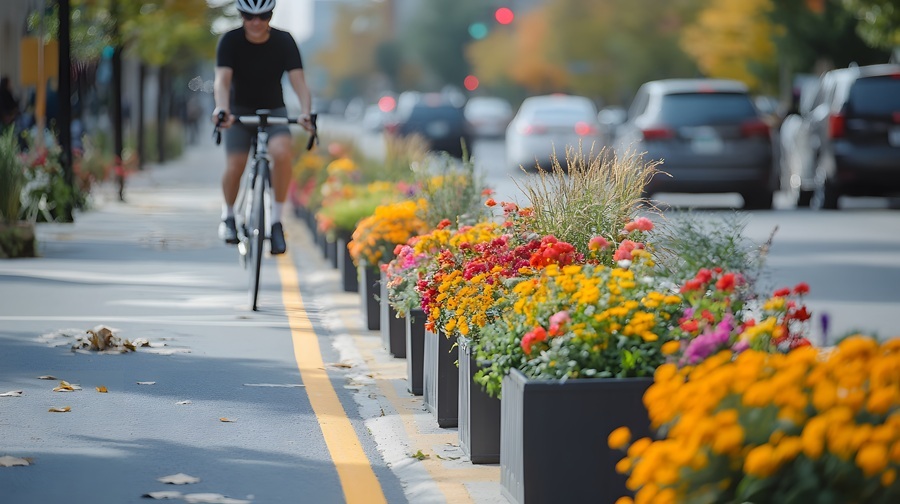
Modern streets aren’t just for cars—they’re for people. That simple shift in thinking is driving an urban design movement toward safer, more walkable streetscapes.
One of the most effective and elegant tools in this transformation? Fiberglass planters.
From pop-up pedestrian plazas to long-term curb extensions, these deceptively simple design elements are helping cities slow traffic, improve safety, and green up their streets—all without pouring a single drop of concrete.
Key Takeaways✅Cost-Effective Safety: Fiberglass planters provide a smart alternative to permanent infrastructure, offering similar safety benefits at a fraction of the cost. ✅Design Flexibility: With a wide range of shapes, sizes, and colors, it’s easy to match your traffic calming goals with your community’s design language. ✅Tactical to Permanent: Whether you're testing a slow street pilot or creating a long-term pedestrian plaza, fiberglass planters can evolve with your project. ✅Minimal Maintenance: Durable, weather-resistant, and easy to clean, fiberglass is ideal for public spaces with limited maintenance resources. |
Why Planters Beat Bollards for Safer Streets?
Unlike fixed bollards, fiberglass planters offer the best of both worlds: real protection and real flexibility.
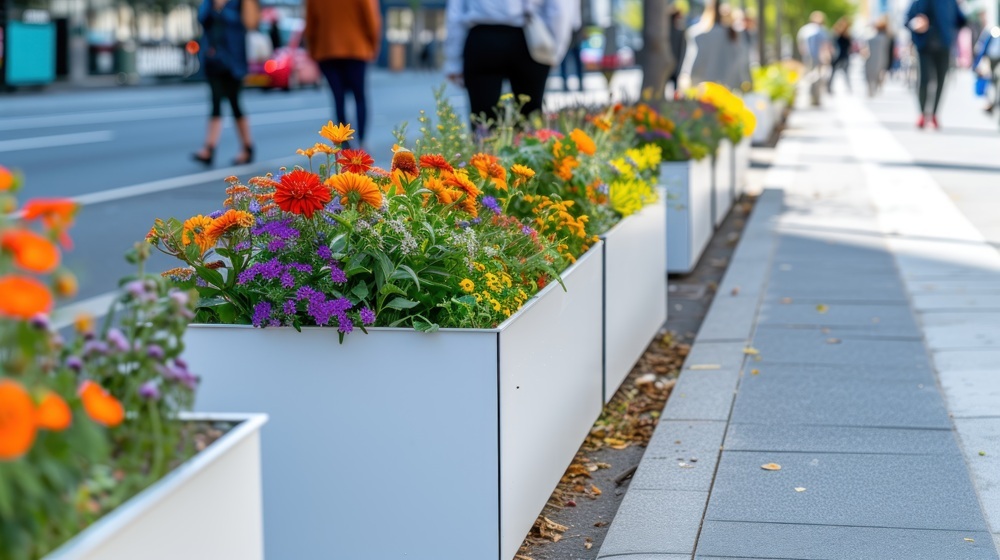
They create visual and physical boundaries that slow traffic and protect people, but they aren’t locked in place. When seasons shift or traffic needs evolve, you can move them, rearrange them, or even remove them entirely.
Want to trial a protected bike lane? Set up a weekend plaza? Build a safer school drop-off? Fiberglass planters let you do all that, and then fine-tune the setup as needed.
What Makes Fiberglass Ideal for Traffic Calming Solutions
Weight vs. Mobility
At first glance, fiberglass planters seem feather-light. But once filled with soil—or ballasted with gravel or sandbags—they become formidable urban furniture.
- Easy to install: Fiberglass planters are light enough for a two-person crew with a dolly or forklift.
- Sturdy in place: Filled, a 36-inch planter can weigh 500+ lbs, enough to deter vehicles.
- Adaptable layouts: Cities can shift planter placements as traffic patterns evolve.
This balance of heft and flexibility makes fiberglass perfect for evolving streetscapes, pop-up projects, and long-term installations alike.
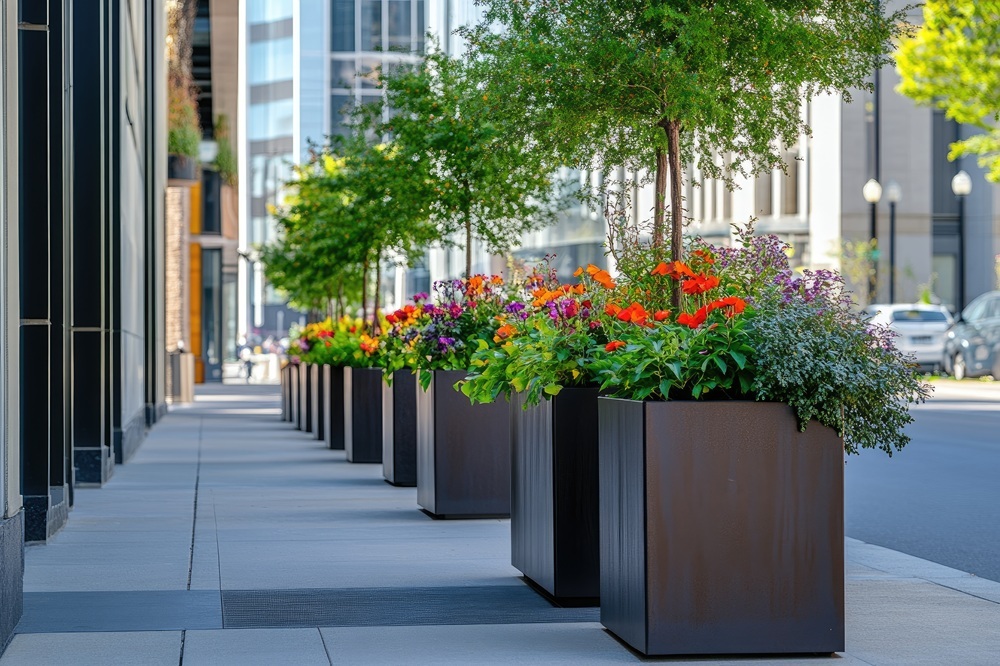
Durability & Weather-Resistance
Unlike concrete or wood, fiberglass doesn’t crack, rot, or corrode. It thrives in punishing urban environments.
|
Material |
Weight (lbs/ft³) |
Durability Rating |
Maintenance Cost (5yr) |
|
Fiberglass |
~110 |
Excellent |
Low |
|
Concrete |
~150 |
Very Good |
Medium |
|
Plastic (HDPE) |
~60 |
Fair to Good |
High (UV fading, cracking) |
|
Wood |
~35 |
Fair |
High (rot, sealing) |
- UV-stable finishes prevent fading
- Graffiti-resistant coatings available
- Withstands freeze-thaw cycles without cracking
You’ll often see fiberglass planters in ski towns and sun-baked deserts alike—because they’re built to last.
Sustainability & Life-Cycle Cost
Fiberglass isn’t just tough—it’s smart economics.
- Long lifespan: 10–15+ years with minimal upkeep
- Low replacement rate: Fewer replacements = less waste
- Recyclable: Some fiberglass can be ground and repurposed
- Shipping efficiency: Lighter weight reduces transport emissions
Compared to wooden planters that rot within 5 years (or require more time-consuming maintenance) or plastic ones that fade and crack, fiberglass delivers real ROI, both financially and environmentally.

Designing a Pedestrian Zone with Planters
Sizing & Spacing Rules
Good design isn’t just beautiful—it’s code-compliant.
- Keep a 6-foot minimum clear path for wheelchair users
- Allow a minimum 3-ft gap between planters at crossings
- Maintain 20–30 ft of visibility at corners and driveways
According to the NYC Street Design Manual, curbside planters should align with parking lanes and not extend more than 6 feet from the curb.
Selecting Shapes for Different Traffic-Calming Strategies
Shape matters—especially when it comes to controlling vehicle flow.
Rectangular Planters
Best suited for creating chicanes, where planters are placed alternately on opposite sides of a roadway to create a weaving path. These shapes are also effective in forming painted bump-outs, narrowing the travel lane without physically altering the curb.
Square or Circular Planters
These are ideal for mid-block chokers—a technique used to constrict road width at a given point, compelling drivers to reduce speed. Their symmetrical footprint also works well for defining refuge islands or forming mini roundabouts at quiet intersections.
Tall, narrow planters
These serve as visual narrowing devices, particularly effective on wide, straight corridors. By introducing vertical elements into the driver’s line of sight, they create a psychological cue to reduce speed, even without physically altering the road.
|
Tip? Use color strategically. A grey or red planter for sidewalk safety creates visual friction and draws driver attention. |
Plant & Soil Choices That Boost Safety
Plants are a key part of your traffic calming toolkit. Here are some useful tips on what to plant to enhance visibility, reinforce calming cues, and signal to drivers that a space is meant for people.
What to Plant
|
Plant Type |
Best Use Case |
Benefits |
|
Low-growing perennials |
Areas requiring sight-line preservation |
Hardy, visually appealing, gentle motion draws attention (e.g., lavender, salvia) |
|
Native plants |
Sustainable, low-maintenance corridors |
Supports biodiversity, requires less watering, fits the local context |
|
Succulents |
Hot, drought-prone, or low-maintenance zones |
Striking visuals, water-efficient, minimal care needed (e.g., sedum, echeveria) |
|
Seasonal annuals |
High-visibility areas or community engagement zones |
Bright colors signal caution, flexible for rotating displays (e.g., marigolds, petunias) |
Safety-First Planting Principles
Plants aren’t just decoration—they influence how drivers perceive space. Here’s how to choose wisely:
- Maintain a plant height of 36 inches or lower in and around intersections and crossings to preserve visibility.
- Use bold colors like reds, oranges, and yellows to activate the driver’s peripheral awareness.
- Avoid sharp-edged, spiky, or allergenic plants near pedestrian zones. Opt for soft foliage and non-toxic species to reduce risk.
- Think multi-sensory: aromatic species like rosemary or thyme can subtly cue slower behavior while enhancing the space for passersby.
Soil Tips
The right soil mix can improve both safety and planter performance:
- Use a lightweight, well-draining mix to support plant health without unnecessary weight.
- Incorporate perlite or vermiculite to keep the soil breathable and reduce compaction over time.
- Add slow-release fertilizer pellets to minimize the need for frequent feeding—ideal for municipal or volunteer-maintained projects.
- For additional ballast in windy areas or high-traffic zones, combine soil with gravel or sand in the bottom third of the planter. This adds stability without overloading maintenance crews.
In short, the right plant-and-soil strategy elevates your traffic-calming effort from functional to beautiful and builds community pride in the space you've created.
Installation & Maintenance Checklist
Preparing the Site
Before installation, assess the placement area to ensure long-term stability and ease of upkeep.
- Surfaces: Fiberglass planters are compatible with asphalt, concrete, or paver surfaces. For best results, install on level, compacted ground to prevent shifting over time. Avoid soft or sloped ground unless adequately reinforced.
- Drainage: Always assess water flow around the site. Use risers or footings if needed to elevate planters slightly, preventing water from pooling underneath and encouraging airflow. Standing water not only affects planter longevity but can also attract pests.
- Marking: Use thermoplastic striping or high-durability traffic paint to outline planter zones, especially near crosswalks or curbs. Clear demarcation helps maintain visual order and improves visibility for both drivers and pedestrians.
Seasonal Care Plan
Fiberglass planters are built for year-round exposure, but plants and soil require seasonal attention. Here’s a detailed guide to ensure longevity and visual impact throughout the year:
|
Spring
|
Summer
|
|
Autumn
|
Winter
|
Real-World Case Studies
Decatur, GA
On West Howard Avenue in Decatur, a fast-moving four-lane road was transformed with a simple but smart fix: a mile-long series of planters arranged to create a chicane. The result?
A noticeable drop in car-versus-cyclist collisions, particularly at a crossing that had been a persistent safety issue. Even better, the city pulled it off for just $283,000 using planters and street paint—far more affordable than the $3–4 million price tag for a full concrete cycle track.
Minneapolis, MN
In 2021, parents and neighbors near Pratt Elementary used a $2,000 grant to slow traffic around a tricky intersection where speeding was common. With help from city Public Works, they installed large wooden planters lined with fiberglass to create curb extensions and a gentle chicane.
Three years later, not a single planter has been hit, cars yield more often, and the area feels safer for kids and crossing guards alike. It’s a small, low-cost project that’s had a big impact—and a great example of tactical urbanism done right.
Budget & ROI
Fiberglass planters don’t just save lives—they save money.
Cost Breakdown
|
Solution |
Initial Cost |
Lifespan |
Yearly Maintenance |
Total 5-Year Cost |
|
Fiberglass Planters |
$350–$900 |
10+ yrs |
$20–$50 |
$450–$1,150 |
|
Concrete Curb Extension |
$12,000+ |
20 yrs |
Low |
$12,500+ |
|
Plastic Bollards |
$100 each |
2–3 yrs |
High (replacements) |
$400–$800 |
|
Key insight Planters offer a sweet spot — durability, safety, and style at a fraction of the cost of permanent infrastructure. That’s why Pots Planters & More fiberglass planters are trusted by cities, businesses, and designers across the U.S. |
Choosing the Right Planter from Pots, Planters & More
At Pots, Planters & More, our fiberglass planters are engineered for public safety, durability, and aesthetics. Here are three top picks:
|
 |
 |
Brisbane Extra Large Planter Boxes
|
|
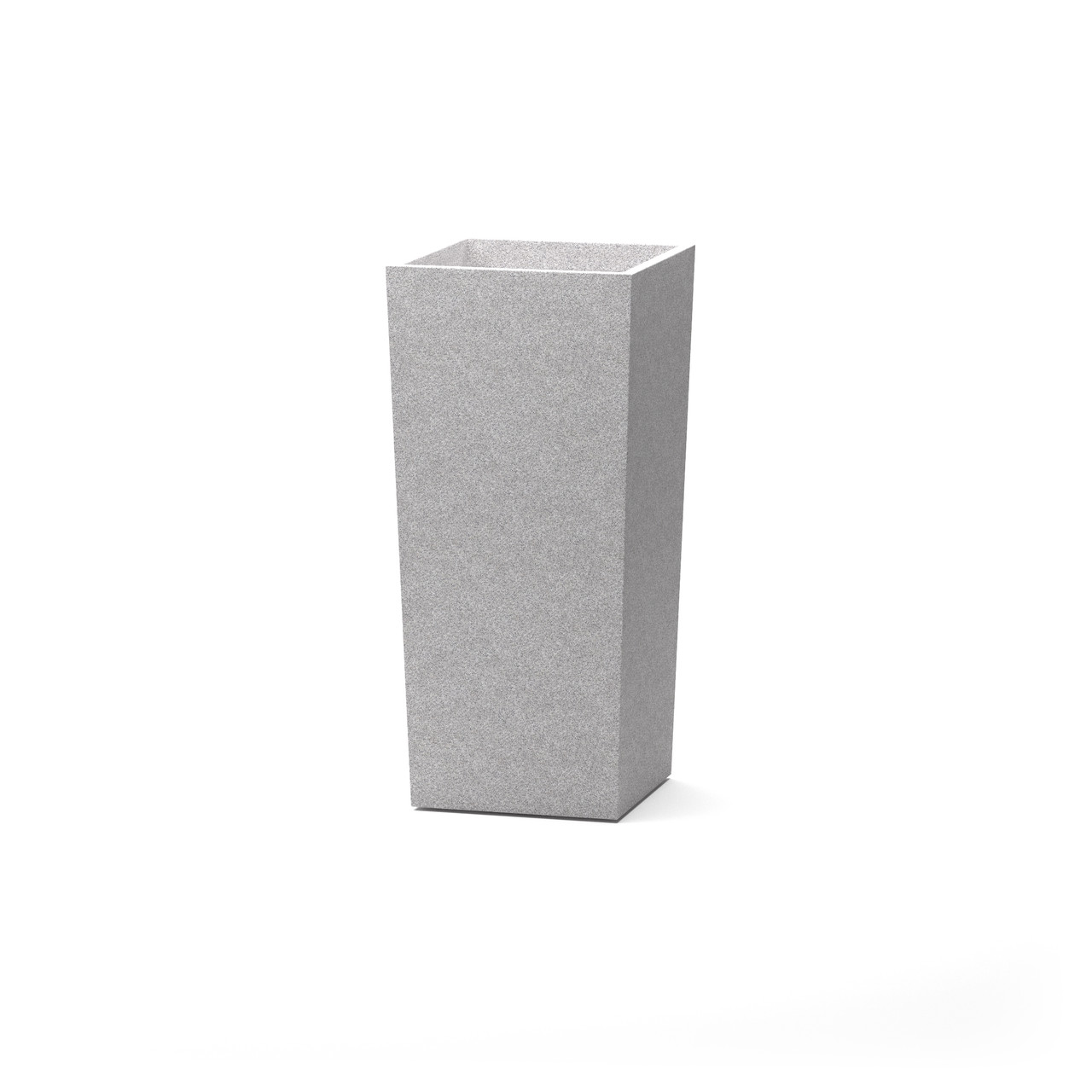 |
Talk to Our Experts or Browse Fiberglass Planters →
Small Shifts, Big Safety Gains
Fiberglass planters are more than street furniture—they’re traffic calming tools, public space assets, and long-term investments in safer streets. These versatile planters offer flexibility, durability, and real design impact.


